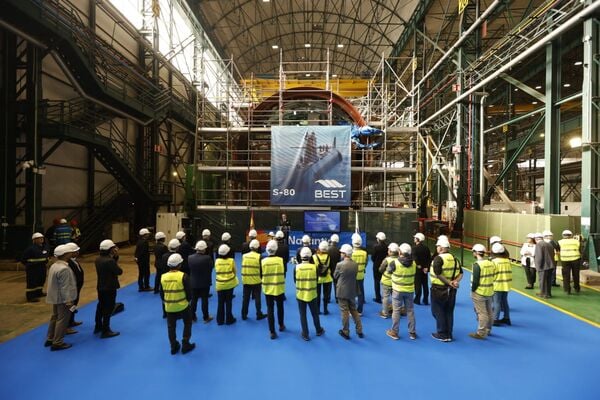
Navantia conducts a ceremony at its shipyard in Cartagena to mark completion of the first AIP installation into a Spanish Navy S-80 Plus-class submarine. This is the first third-generation AIP fitted into a submarine. (Navantia)
Navantia has completed installation of the first hydrogen-based air-independent propulsion (AIP) system on board a Spanish Navy S-80 Plus-class diesel-electric attack submarine (SSK).
A ceremony to mark the milestone was held at Navantia's shipyard in Cartagena, southern Spain, on 26 November, the shipbuilder confirmed the same day.
The AIP system, commercially named Bio-Ethanol Stealth Technology (BEST) by Navantia, is based on bioethanol reforming technology and will provide the Spanish Navy's new submarines with the capability to remain submerged for up to three weeks.
Developed by Navantia in partnership with the Spanish Navy, US company Collins Aerospace, and local partners Abengoa and Bionet, it belongs to the third generation of AIP systems that use hydrogen produced on board from a fuel – agricultural bioethanol in this case – as required instead of pure stored hydrogen for their operation. Navantia has championed the use of bioethanol – a renewable fuel obtained from organic feedstock – as a source of hydrogen because it is readily available worldwide, is cost-efficient, does not require special infrastructure, and is safe.
BEST-AIP components
The BEST-AIP system comprises three main components: a miniature bioethanol reformer (developed by Abengoa); a 300 kW militarised proton exchange membrane (PEM) fuel cell (supplied by Collins Aerospace); and a carbon dioxide disposal system (developed by Bionet).
Looking to read the full article?
Gain unlimited access to Janes news and more...







